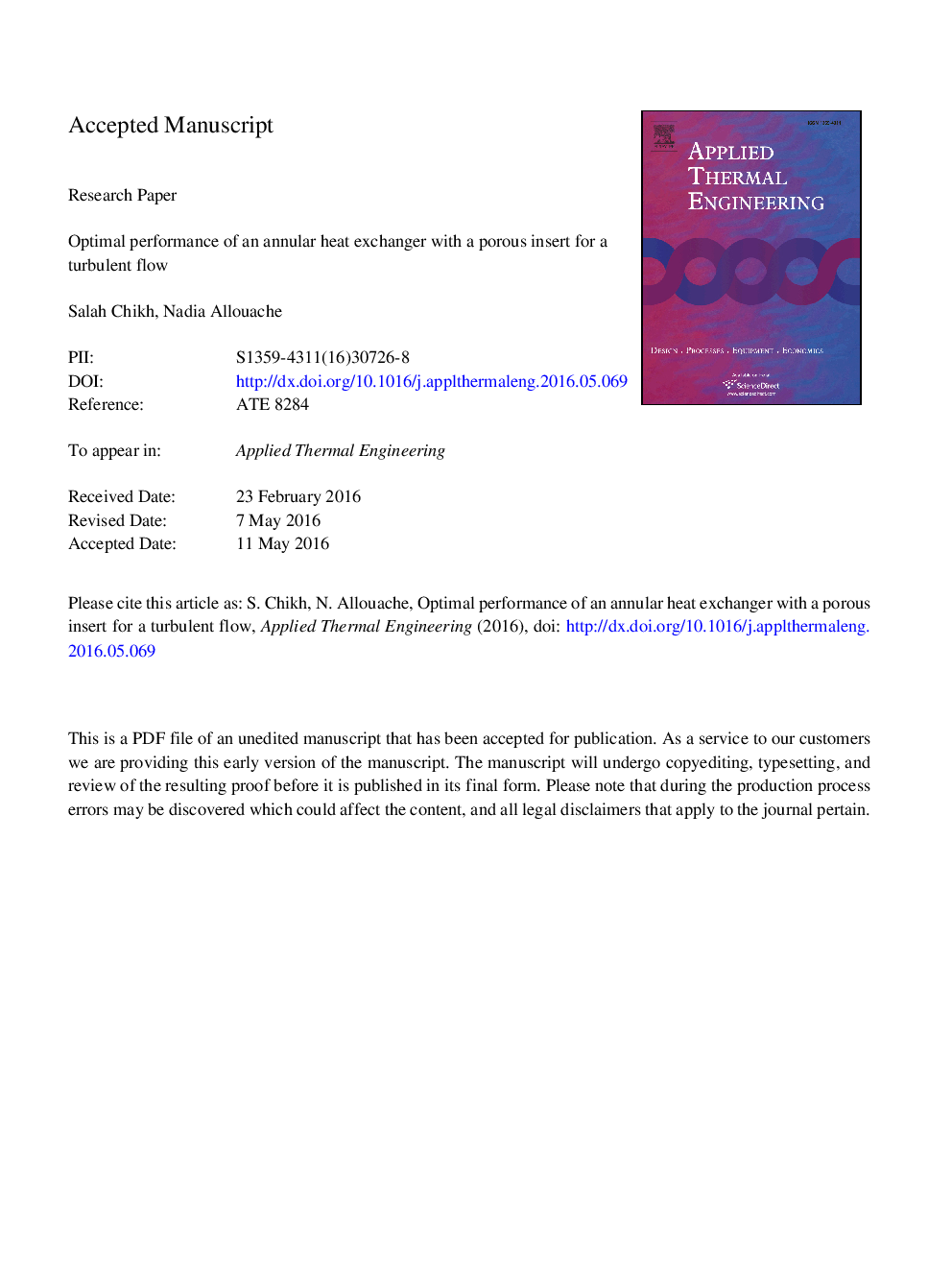| Article ID | Journal | Published Year | Pages | File Type |
|---|---|---|---|---|
| 644496 | Applied Thermal Engineering | 2016 | 38 Pages |
Abstract
The use of porous materials as a passive technique to intensify heat transfer has been well established. Yet, this is always accompanied by a non-desirable and costly effect that is a higher pressure drop. Adopting such a technique requires a compromise between hydrodynamics and thermal performances in order to use efficiently the available energy. In this study, we analyze the performance of an annular heat exchanger with a porous insert by means of the assessment of entropy generation rate due to fluid friction and heat transfer for a turbulent flow. The porous substrate is attached over the inner pipe. A modified κ-ε model is used to account for turbulence in the porous medium. Effects of several parameters such as the porous layer thickness, its permeability, its thermal conductivity and the inlet temperature difference are investigated and documented. It is highlighted that the porous insert with an optimal thickness allows a significant reduction of total entropy generation when it has a high effective thermal conductivity. Hence, this heat transfer enhancement technique has a great merit for thin porous inserts not exceeding about 40% of the annular gap.
Keywords
Related Topics
Physical Sciences and Engineering
Chemical Engineering
Fluid Flow and Transfer Processes
Authors
Salah Chikh, Nadia Allouache,
